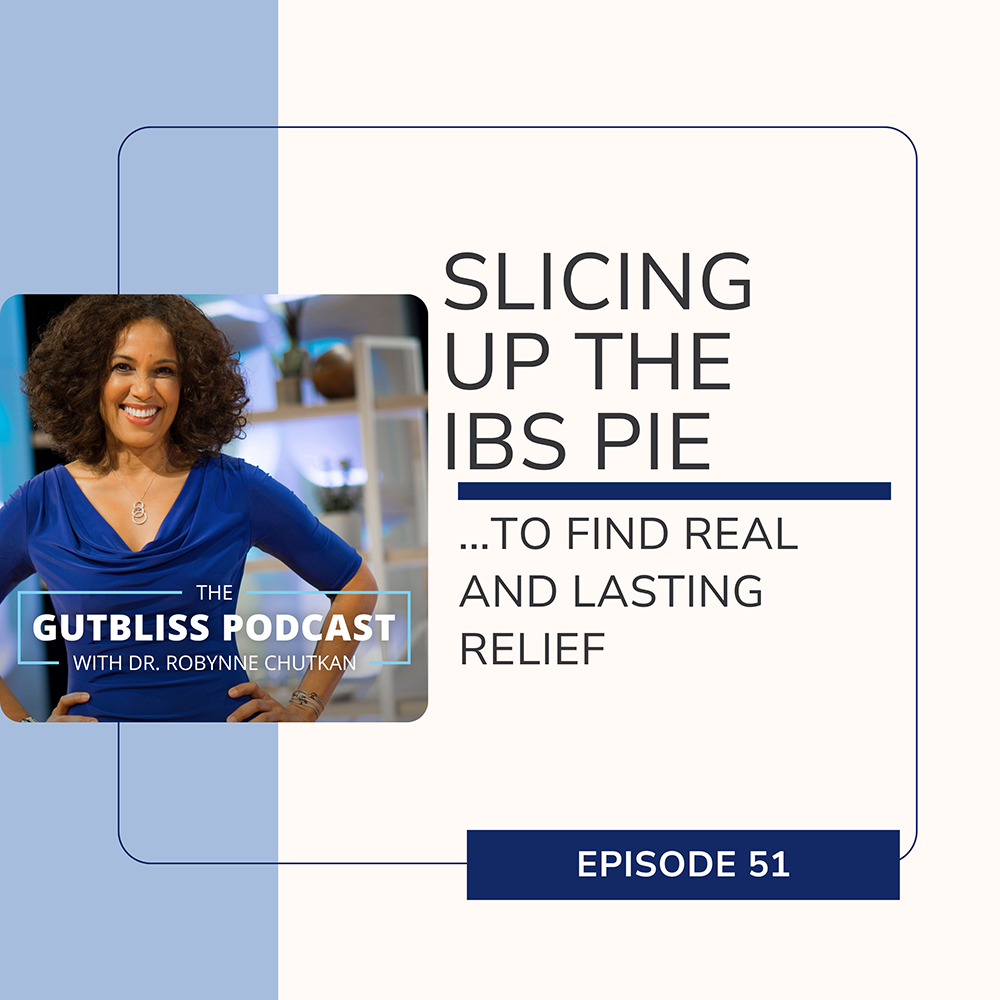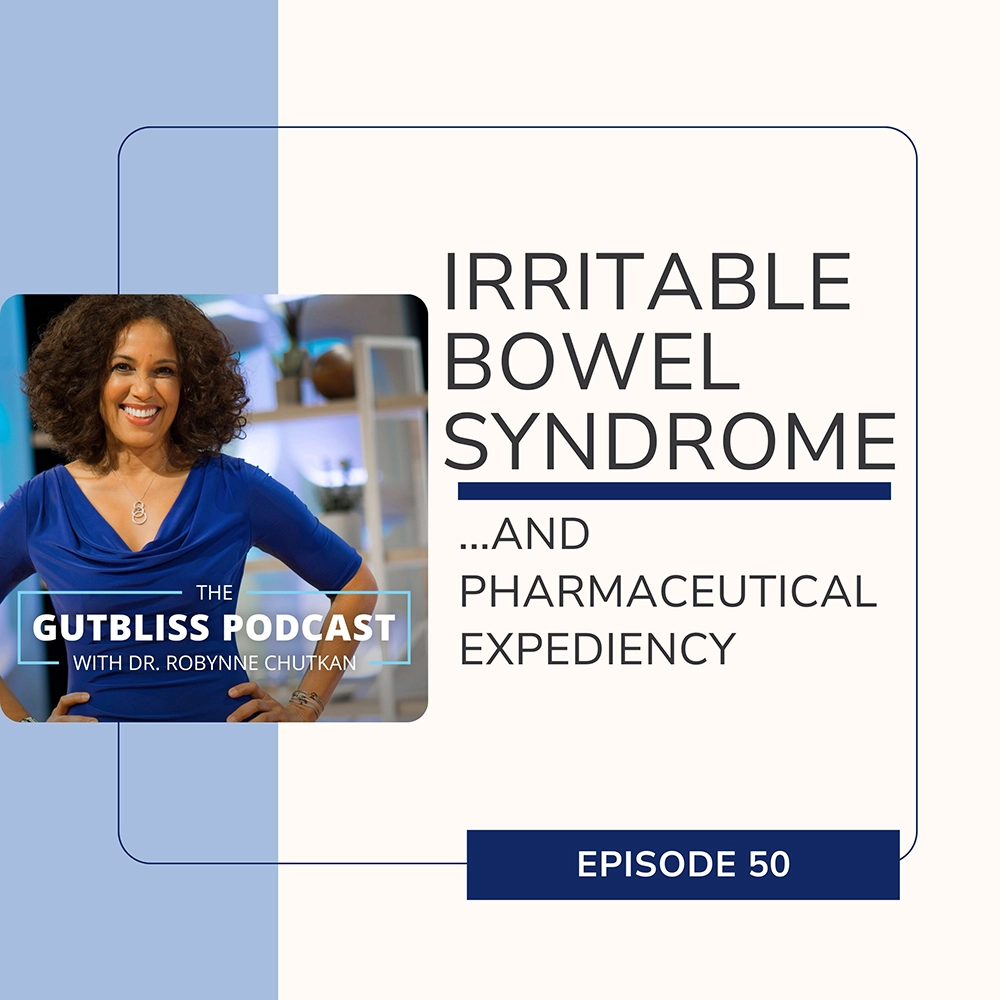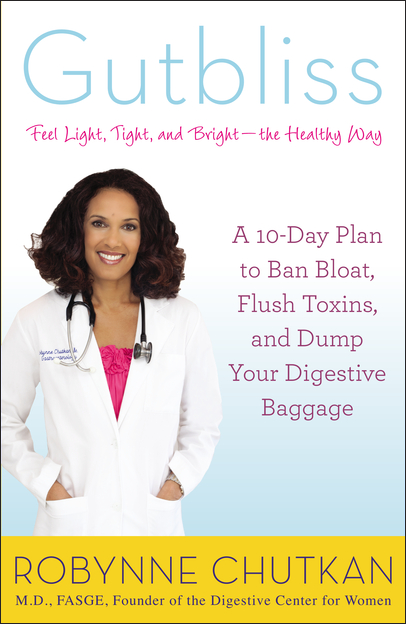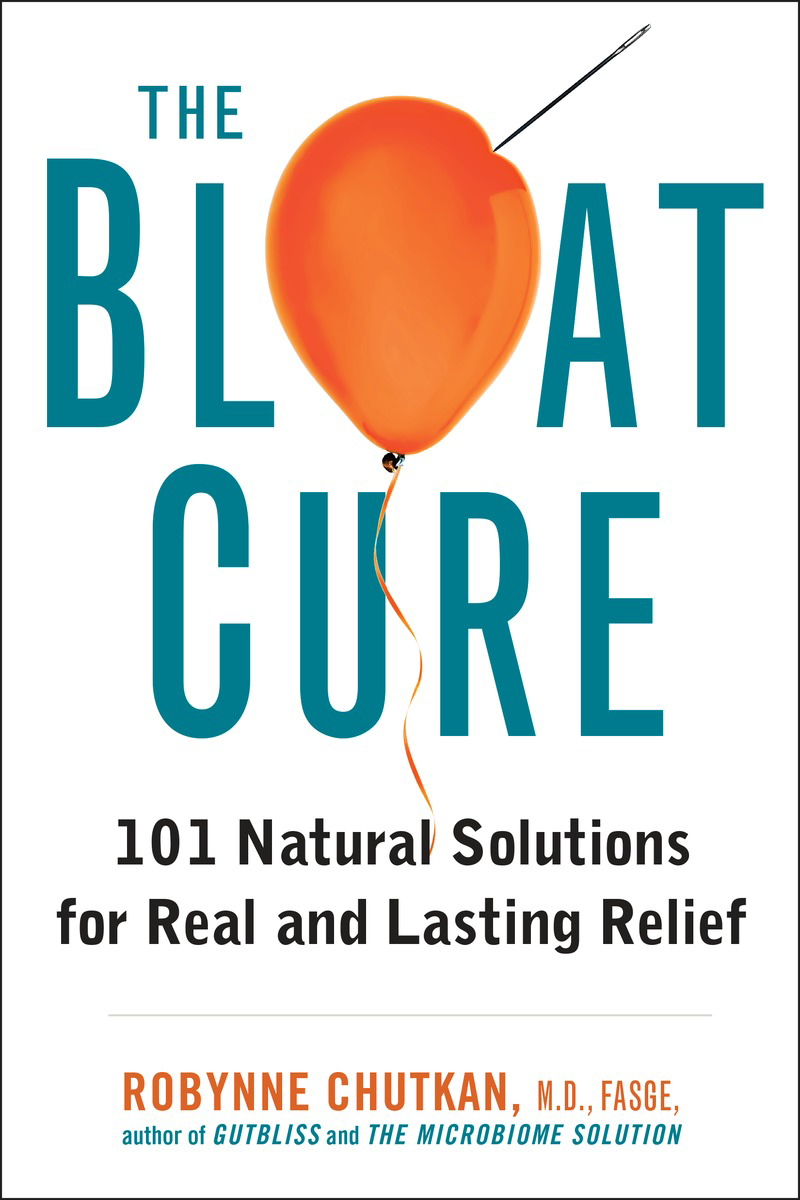On today’s show, why you need to turn around and take a look. And yes, I’m talking about when you are sitting on the toilet and you have finished doing your business, why you absolutely must turn around and take a look at what has come out. Your stool is valuable feedback that your body is giving you, and if you are not looking at it and analyzing it and evaluating it, you are missing out on really important stuff.
Thank you for being a part of our community! For the latest in digestive wellness go to https://gutbliss.com/ and follow us on Instagram for more gut health info.
On today’s show, why you need to turn around and take a look. And yes, I’m talking about when you are sitting on the toilet and you have finished doing your business, why you absolutely must turn around and take a look at what has come out. In fact, before you finish your business, before you wipe, I want to be really specific, it is so important to take a look at what is coming out because your stool is valuable feedback that your body’s giving you. And if you are not looking at it and analyzing it and evaluating it, you are missing out on really important stuff. So back in the Gutbliss studio for her third time is Janet Jumper, nurse practitioner extraordinaire, advocate of the Gutbliss Method. She’s a family nutrition expert, and like me, she’s a poo aficionado. Janet, welcome back.
Thanks, I’m so happy to be here. This is one of my favorite topics.
You and me both! Now, you have a personal reason why you have been looking at your own poo for years. Tell us a little bit about that for those who may not be as familiar with you.
Yes, so I have Crohn’s, and I’ve had it for the last 20 years. It’s definitely informed and influenced so much of my nutrition expertise and interest, and of course, also the interest in what comes out of your body. So, you know, I’ve gone back and forth from really diarrhea and loose stools associated with Crohn’s and Crohn’s flares to being able to use my nutrition to get beautifully well-formed Bristol stool chart fours, daily poos. And that’s been a great evolution for me and something that I really love sharing with anyone who wants to talk about it.
And you can’t see us, although you will be soon because we are transitioning to video in about a month. But right next to Janet in the studio where we’re recording is my favorite chart, it’s a Bristol stool chart. And it describes stool from type one to type seven. So Janet mentioned she’s a type four – and not to put too much of a hierarchy here, but that’s a good type to be. Type one is super hard. It’s separate hard lumps where your stool is like nuts. They’re hard to pass. Type two is sausage shaped, but lumpy. Type three is like a sausage, but with cracks on the surface. You know, gastroenterologists, for some bizarre reason, we love to use food analogies. When patients come to see me, I’m like, so is it soft like tiramisu or like oatmeal? But I digress. Type four, Janet’s type, and I will add my type also most of the time, is like a sausage or snake. Smooth and soft. Big snake, though, we’re thinking; not garden snake. We’re like big boa constrictor. Type five, fluffy pieces with ragged edges. Type six, this is basically a mushy stool and type seven watery, no solid pieces, entirely liquid. So that’s the Bristol stool chart, so named from a study done in Bristol, England, type one through type seven. And ideally you’re shooting for a three, four or five. So there you have it. So Janet, let me ask you, because a lot of my Crohn’s and colitis patients tell me this. They tell me that they can sense a flare coming even before it’s sort of fully upon them based on what’s going on with the stool. Has that been your experience where the stool starts to get a little weird?
Yes. So I would say, interestingly enough, an odor change and that I think has to do with just if your microbes are disrupted for whatever reason from what you’ve been eating, you’re off your game. And then also it’ll start getting looser, different times of day, triggered by foods that don’t normally trigger it. And then I will go into a full on just sort of diarrhea event. three to five years where we’ve been talking about a meal program and the Gutbliss Method is what we’re talking about more frequently. Like the moment I’ve started doing, really adhering to those rules, I almost never have a problem.
And to be clear, the rules are pretty basic, like eating or drinking a green smoothie every morning, trying to get in at least six servings of vegetables a day, focusing on that American Gut Project data that I talked about last week, about 30 or more different plants a week. So pretty basic stuff, you know, Michael Pollan type stuff: “eat food, not too much, mostly plants.” I’m so glad you mentioned about the odor because I’ve been doing colonoscopy for a long time, for about 30 years now. And one of the things that is so striking to me is when I’m doing a colonoscopy on somebody with ulcerative colitis or Crohn’s, I can smell the inflammation before I see it. So as I put the scope in, before I get up to the area that’s inflamed and whether that’s gonna look ulcerated or there’s some blood, I can smell it. And really, it’s exactly what you said. It’s the microbiome that has shifted and also the pus, the inflammatory white cells in somebody whose colon is really inflamed that you’re smelling. And the same thing in somebody who has infectious GI condition like rotavirus, you can smell it from across the emergency room.
Or C. diff, or melena, all the things in the healthcare setting. Once your nose gets attuned to those things, you’re a hundred percent tuned into what’s about to happen.
Absolutely. For sure. And for some of them, like you mentioned, melena with blood in the stool, it’s actual blood. But for a lot of these things, it’s a disruption of the microbiome and the change in the microbes. So you’re smelling it, then you’re seeing it.
That’s right. And another thing that I do want to point out about plant fiber and people with ulcerative colitis and Crohn’s, and I’m not trying to make universal truth for everyone, but when you are having a flare and it’s hard to eat those indigestible fibers, I think what you tend to do is then sort of dispel or create some sort of myth that you can never have those. And in reality, as soon as I can get back to eating, you know, insoluble plant fiber, I mean, I’m eating it anyway, I’m doing, if I historically had a flare, I would do more of like sweet potato and more easily digestible plants. But once you can get back to having that insoluble fiber, do that right away, because that’s really what’s gonna get you back to having the well-formed stools.
That is such an important point. And I wish more gastroenterologists were aware of that and made that point, because what we’ve seen historically in the inflammatory bowel disease world is what I call the Wonder Bread Diet. Gastroenterologists tell patients, you know, your colon’s really inflamed or your ileum, your small intestine is really inflamed, fiber is your enemy and you wanna eat white bread and white pasta and white potato and all the low fiber, typically processed foods. And it’s true, the point you made, that when your gut is really inflamed, that’s not the time to have a huge kale salad for most people. But the other point is really important, which is that those high fiber foods feed our microbes. And that’s what’s going to shift your microbiome to an anti-inflammatory state and help with the healing. So it’s really a fine balance and shameless self-promotion: I have a course, “Drug-Free IBD, Remission Without Immunosuppression”. And that course really focuses on what to eat, what not to eat, and when. So the diet for that program is divided into a sort of phase one, phase two, phase three, depending on where you are with your symptoms. If your symptoms are really active, you might need to be in the phase one part of things versus if you’re in remission, you’re in a maintenance phase three. And it’s so important for people to really understand that and get in sync. And a big part of that starts with the stool, right? What’s going on in the bathroom? And that’s gonna tell you what to do in the kitchen, and what to have on your plate and really going to inform that decision.
Yes, correct. I agree with all those things.
So to bring a little levity to it, when we come back, we’re going to shift away a little bit from Janet’s poo to Janet’s boo’s poo. You got that? Janet’s new boo’s poo. And that, my friends, is a hilarious conversation that you don’t want to miss when we come back.
The Gutbliss Podcast is brought to you by Visbiome, my first and, quite frankly, my only choice for a probiotic. Whether you’re dealing with irritable bowel syndrome or just looking to restore your gut health, Visbiome can help. It’s a medical food for the dietary management of IBS and gut inflammation. Backed by science and clinically vetted by thousands of my own patients. Find your gutless with Visbiome. Go to visbiome.com/Gutbliss and use discount code GUTBLISS at checkout.
As promised, we are back, and we are going to dive right into Janet’s boo’s poos. So Janet, you have a new and lovely relationship.
Yes, yes I do.
And you have dived right in with “are you turning around and taking a look at your poos?” Tell us a little bit about that conversation.
Yeah, this is a fun story, and full disclosure, I was given permission to mention the name and the situation. I don’t know that he knows that we’re going this far into this, so we’ll see if the relationship lasts beyond this episode. Okay. So, first, full disclosure, first of all, everyone in my family since the new year is on the Green Smoothie kick, finally. I’ve been trying to get them on it, so my parents are doing it, my sister and her family are doing it, I have friends who are doing it, but Rocky and his two kids that live at home are also doing it. And he was like, just give me one thing that I can do for my morning program that will help my morning routine. And I was like, this is the thing, so start here. So he was super happy to do that. So he’s now three weeks in, he’s sending me progress reports, he’s proud of himself because we don’t live in the same place. And I’m, you know, cheering him on. And finally, after a couple weeks, I said, well, are you noticing anything? He said, well, what am I supposed to notice? I said, well, what’s going on in the toilet? He’s like, what do you mean? I said, well, what’s coming out? What was your poo like? Well, I don’t look at that. I mean, why would I look at that? I’m like, oh, my gosh, do I know you at all? Like, this is exactly what you need to be looking at. This is the number one health indicator of everything. The number one thing that’s going to tell you how your digestion is, how your microbes are, how you’re feeling. You need to be looking. And he’s like, OK, well, I guess now I have to. So I have now gotten a feedback report. And one of them was it was like pooping velvet rope. And I almost, I almost got a picture. I almost got a picture. So that’s the next phase of our relationship is when I start getting poop pictures over the phone. And I don’t know what level of relationship that is, but that’s what we’re looking for.
I think that’s 20 plus years of marriage. And let me tell you, Eric does not appreciate my poop pictures. I’m still waiting for his, but he’s like, let me tell you, I know this is your love language, but this is not my love language. Please refrain from sending, but you know that feeling when it is so magnificent that you are like, I have to capture this.
Yes, 100%. On camera. Cause the girls and I talk about that all the time. So we are, we call each other into the bathroom frequently to look at each other’s poops. Not so much them to me, but for sure me to them. And we talk about it all the time and they’ll come out and be like, oh mom, that was a good one. And you know that feeling. So I poop in the morning pretty much 90 percent of the time, getting the girls ready for school right before I drive Claire to her school, in the bathroom, quick and easy, out the door. And I am sitting there driving in northern Virginia traffic in total bliss because I’m like, oh, my gosh, that felt so good. And that lasts an hour. And I mean, we could almost relate it to some other feelings that you can get in your life.
If Janet were a smoker, she would be lighting up a cigarette, but of course NOBODY should be lighting up a cigarette, but it’s that sort of, oh my goodness, I’m going to light a cigarette moment, because, you know, as you said, relating it to some other things in your life. Just to be clear, NOBODY should be smoking. Speaking of the girls, I remember one of the saddest moments for me, I think Sydney was about 12, because I was always in the bathroom, you know, I’m like sniffing around, looking, all of that. And she, maybe I think she was younger than that. She might’ve been 11 and she was like, PRIVACY! And I was like, what? She was like, you can’t be in here sniffing and looking. This is my private business. And I was so crestfallen. So, you know, I just had to trust that all was well. But part of that too, is that what comes out is not this thing that is completely unrelated and disconnected from what’s going in. What comes out is a reflection of what’s going in. So how much fiber you’re having, your hydration status, other things too, like are you moving, what kind of fiber are you eating, all of these things, but it’s not this black box. And it’s one of the things I’m always trying to get people to do is you’ve got to reconnect with your body. And if you are having gut health problems or, you know, any sort of GI symptom, and you are not turning around and taking a look and checking out what’s coming out, looking at it and also smelling it and, you know, evaluating it, you are missing out on some really valuable feedback.
Yeah. And it’s the number one monitoring tool that is easy and accessible to all of us. And I think that’s what we’re not paying attention to. So we’re putting all this money into monitoring devices. We’re directing our focus to things that are not, I don’t feel like, as important as the feedback that you can get for free daily in your home. And so this is also to bring this back to the relationship. This is also something that we’ve been talking about, because Rocky’s really into monitoring and that’s great. And he has a device that makes him feel great. And he looks at his sleep and that’s wonderful. But my feedback to that is, well, when you woke up, did you feel good? And when we talked about this a little bit earlier, like, you know, when you ate that meal and then you pooped, did it feel right? Like, how did that feel?
Did you need your device to tell you that you experienced stool nirvana? Well, we were laughing about this earlier, how sometimes driving around Washington, DC, where I’ve lived for 28 years, to someplace that I’ve been to literally thousands of times, I’ll put on the GPS just to see, oh, are they telling me to go through the park or take 16th Street, which is a quicker way. And then I will literally get to the point where I’m like forgetting which way to turn, like basic navigation or math. So I pride myself on being a math whiz. And I’m like, what’s 87 times 13 again? And pulling out the calculator on the phone, like you can multiply 87 by 13. So it’s this idea, right? If you don’t use it, you lose it. These basic skills of navigating around a city you know, of doing basic math quickly, these are things that are building connections, neural connections in our brain. And the same thing, like I’m not saying never use a device to track sleep or fitness or whatever. But you lose focus. You lose focus and you can become disconnected where you’re relying on a device to tell you something that you know. I mean, I don’t need a device to tell me if I’m hungover. I know if I’m hungover, you know, probably I want the device to tell me I’m not hungover.
I really got a great sleep score in spite of the fact that I had a martini last night or whatever. Yes, exactly.
So, you know, I think it can be a helpful tool for people if they’re like, for example, you mentioned drinking. If you are trying to drink less and you think, almost certainly accurately, that it’s disrupting your sleep, we know that alcohol is a stimulant, actually, it’s not a sedative. Or rather, it is a sedative, but sedation is not sleep. So it initially sedates you and then stimulates you, but neither of those things are helpful for sleep. So if you’re concerned about that and you’re concerned about sleep and you want something to give you some additional data. But chances are you already know. If you’re worried about it, there’s a reason you’re worried. It’s because you know that this is disrupting your sleep.
And everyone’s brains work differently. And some people really do rely on that information. It makes them feel good; it’s reinforcing. So I think it’s really also analyzing, is this reinforcing something I already know and making me feel good? Or is this a distractor, like you spoke to, of things that I already know, and I should be paying more attention to, if not for this thing that I’m looking for reassurance from.
And speaking of tools and devices to help you track this stuff, sometime last year, I think it’s the second half of last year, I got an email from a recent college graduate who has a startup that is some device or some particular souped up toilet bowl that analyzes stool and he wanted some advice on that. He was looking to put together an advisory board. And I had some interesting conversations and thoughts about it. On the one hand, if you are somebody who has a condition like ulcerative colitis or Crohn’s or multiple different GI conditions, could be helpful. If it had some sort of AI mechanism to figure out ahead of time when you’re flaring or something like that, for sure, and there’ve been stool studies that have looked at that. But my concern is the average person is now going to start obsessing inappropriately and unnecessarily about the quality of their stool. I mean, there’s so many things to track and there’s so much about the microbiome we still don’t know. Like we know, you know, these several thousand microbes, a little bit about what they do, but we don’t know everything about their metabolic products, etc. So my concern is that it’s going to lead to this sort of heightened state because we’re trying to overanalyze something where I think the more sensible approach is just to look and see, okay, does that smell really rotten eggs bad, different from usual? I don’t think anybody’s stool necessarily smells great, but is that a very different smell that I should be concerned about? Is it very loose where normally it’s formed? And I should be concerned about that. Is there more undigested food particles in it than usual? Is there blood in it? So these are the basic things. I don’t think we need a microbial analysis of our stool every time we go. We don’t even know what to do with that information 90% of the time. And it could change stool to stool, honestly, based on what you had that day. I mean, I think there’s so much about that that we don’t really understand. Yeah, I mean, we may get to that as part of personalized medicine, but I think it’s another data set to really confuse us. And we’re kind of seeing this in the longevity world. There was an article in the New York Times recently about some of these longevity clinics and about all the data and how confusing it can be for people. And we don’t know whether a lot of these interventions are making a difference or not. It’s just data to track. And, you know, the human body is more than just data sets, right? And data parts.
Yeah, I’ve been feeling really so great with just using the information that I have when I wake up in the morning, when I look around in the toilet, when I get feedback from family and friends, when I know that I’ve had a good meal and eaten a great meal. Like that is the back to basic stuff that really is influencing and informing my decisions and giving me the feedback that I need that I’m doing a good job. So sometimes the less confusing it is, the easier it is.
Absolutely. No, my green smoothie game when I’m really on it, I will admit it’s a little more challenging in the winter because I tend to not want to have something cold, but I’ve been really good so far for 2025. So probably 98% of the time. And yeah, when I start the morning with a little movement or run or something and I drink that green smoothie – and I like to get into the bathtub and drink it, hot water, cold green smoothie. It’s a little time consuming, but I do enjoy that on the mornings when I can do it, drink my green smoothie in the bathtub. And definitely, the next day, it’s on. It is definitely on with that green smoothie, even if the rest of the eating has not been perfect. I mean, if the rest of the eating has been, you know, brown rice, lentils, spinach, even more so. But what I find is that the green smoothie is a little bit protective, right? Because I don’t know how you make it, but I’ll tell you my basic recipe. And actually, when we come back, I’ll tell you my recipe, and I’ll tell you how to get my free green smoothie recipe booklet when we come back.
We are back talking about green smoothies, stool Nirvana, turning around and taking a look. My green smoothie doesn’t change a ton. I pretty much always use unsweetened coconut water as the base with a little bit of regular water. So I would say like two to three cups of coconut water, one cup of regular water. And then I like to use at least two leafy greens, almost always spinach. And then the second one would be either kale or collards, depending on what I have. Sometimes I use spinach, kale, and collards, but it’s usually two out of those three. I always put in a stalk or two of celery for that extra stringy fiber. And then I put in what I like to call the “sides”. So that would be ginger for flavor, and it’s also great for gut motility, a little bit of parsley if I have it, a big squeeze of lemon, and then for fruit, it’s usually fresh or frozen mango or pineapple, sometimes a green apple, usually one fruit, but sometimes it’s mango and a green apple, and lots of ice. And I like it the consistency of a pulpy orange juice. I want it thick enough where there’s a lot of fiber, but not so thick that it’s really just kind of, you know, congealing in my mouth. So I blend up a huge Vitamix blender full, and usually I’ll have maybe 20 ounces one day, sometimes 30, but I’ll usually make it for two days. So I’ll have half of it one day and half the next day, or sometimes my husband takes the second half. I used to make it every single day. And I’m like, no, it’s okay. I can have a smoothie that’s 24 hours old or 12 hours old. So do you do anything differently with the girls for yours?
So we do a green smoothie daily. And I will say that for people who are struggling with how do I get my kids on board with this, I just always want to remind people that the more example you set, the more you just keep doing it consistently, your kids are going to start watching and looking and understanding the why and being very interested. So we started out reticent to the green smoothie and with just a little bit of persistence and just positive talking, we really got behind it. And so I want to encourage people in that way. I usually add two fruits and, you know, I tell the girls, I’m like, this is not a treat. This is not supposed to taste like ice cream. And in fact, I shy away from any green smoothie recipe that’s like, “tastes like ice cream” or “dessert smoothie”. Just even that messaging, I think, is the wrong one. No, it’s supposed to taste like a healthy, nutrient-dense, vital part of our day, and that includes something that isn’t meant to be dessert. But I do add a couple fruits just to make it more palatable. So green apple, pineapple, that kind of thing. And then things that I add too, I actually try to put in a little bit of fat and a little bit of protein just to make it a more filling component of the start to the day. So we do hemp seed and some coconut milk usually additionally. And what you end up finding with my girls particularly is now they ask for it. Chelsea will walk in and say, well, you haven’t made me my green smoothie today. And oh, do you want that? Well, yes. You know, and all of a sudden it’s a thing that is a, it’s, it’s feedback for them. They feel like I’m loving them through it. When they don’t get it, they miss it. And so we now have a really positive connotation around the green smoothie that I think is universally applied to anyone who wants to try it. They notice it in the bathroom.
There are a couple of things about what you said that I really love. Number one is the idea that it’s not supposed to be a treat or taste like a milkshake. And I think in particular for kids, getting them used to a more savory or even a bitter taste sometimes is so important. So you may start your kid out with your putting in, maybe you’re even putting in some Greek yogurt or something and making it creamier like a milkshake or more strawberries and bananas with the spinach. I mean, I remember we started out when Sydney was really little and we weren’t using Greek yogurt, but we were using, I think an almond or cashew yogurt at the time and frozen strawberries and bananas and some spinach. And then over time, we used less fruit, more spinach, and it went from being a sort of pink milkshake-y color to being that brown muddy color to being green. So it’s a gradual transition in that, you know, if you have young kids, that’s perfectly acceptable. But you want to make that transition at some point, and you don’t want to start too sweet. Because backing away from that is hard. And make sure they know, like, this is healthy, this is something that we do, it’s like taking a vitamin or anything else. It’s really good for us. And I think your girls have made the connection between the smoothie and what’s going on in the bathroom.
100%. Oh, they love that. And they love it when it comes out green. I mean, we have all kinds of things. Our house is comical with regard to poo, but yeah, it really is a fun component of the family dynamic. And I think that can be accessible to anyone.
The green wipe is a nice big bulky fiber-filled stool that drops out of the rectum effortlessly into the bowl. And when you wipe, there’s like nothing on the toilet paper, right? That’s perfect. As opposed to a messy wipe because you have an incomplete evacuation because your stool doesn’t have enough fiber in it. But the green wipe is truly stool nirvana. That’s when you wipe and there’s like the little bit, the trace of green on the toilet paper because you had so much green fiber in your stool. So wonderful.
That is the bomb. So I did want to bring us back to recipes because I know you were going to mention recipes. And I did want to say, I have one that we do with bok choy, mango, and cinnamon. That’s really good. And then add the celery, the green apple, a second green, usually spinach, because that has the least amount of taste. But the cinnamon really amps it up for, especially for kids. So I do want to throw that in there. And so you were going to mention how to get recipes.
Well, this is what we’re going to do. DM us. So I’m @Gutbliss, G-U-T-B-L-I-S-S, DM me “smoothie”, and I will send you my gutbliss guide to green smoothies little booklet. And DM Janet @JanetJumperNP, Janet Jumper, J-U-M-P-E-R, N, as in nurse, P as in practitioner. DM her “smoothie”, and she will send you her favorite recipes. How’s that?
Perfect. Fantastic.
Janet, it’s always such a thrill to have you here. We could chat literally for weeks. All day. About poo and smoothies and fiber, and you know, why your smoothie shouldn’t taste like a milkshake and our children’s poo. I’m sure they’re going to stop speaking to us at some point, but until then we’re good. But I just want to thank you. You bring so much humor and knowledge and wisdom and empathy and compassion and kindness to the conversation. Thank you.
This is so great. I love this.
I want to leave you with 3 takeaways about what’s coming out the other end:
1. You MUST turn around and take a look at your bowel movements. What’s coming out the other end is valuable information that’s going to tell you a lot about your health.
2. What comes out of your digestive tract is a reflection of what you put into it. If you’re having small, hard stools, you probably need more fiber and more water.
3. If you want that velvet rope poo that Janet was talking about, I highly recommend a daily dose of my Gutbliss green smoothie. You can find a link to it in the transcript on Gutbliss.com under Podcast, or DM me the word “SMOOTHIE” on Instagram @Gutbliss and I’ll send it to you.
So that’s it for this edition of the Gutbliss Podcast on why you need to turn around and take a look at your bowel movements. I’m continuing the stool nirvana theme next week with an even deeper dive into the wonderful world of bowel movements; the five essential factors that you should be assessing when you turn around and take a look at your poo.









